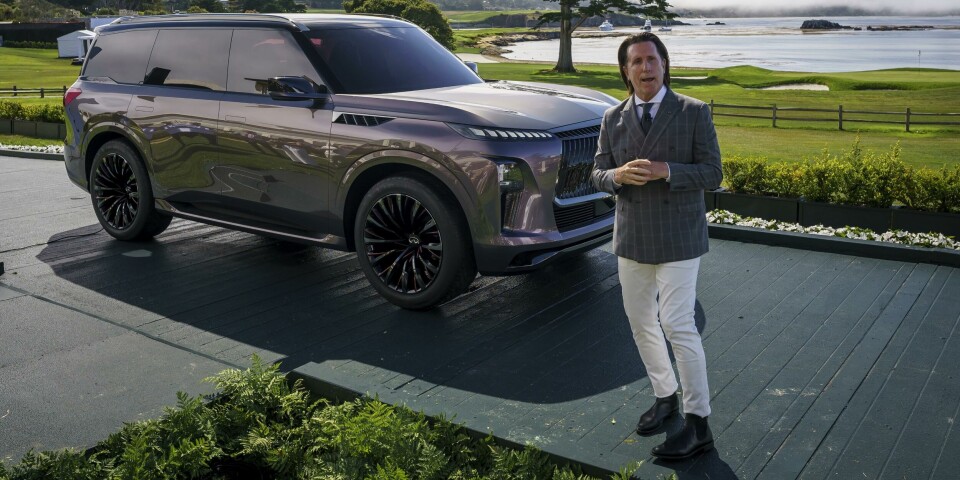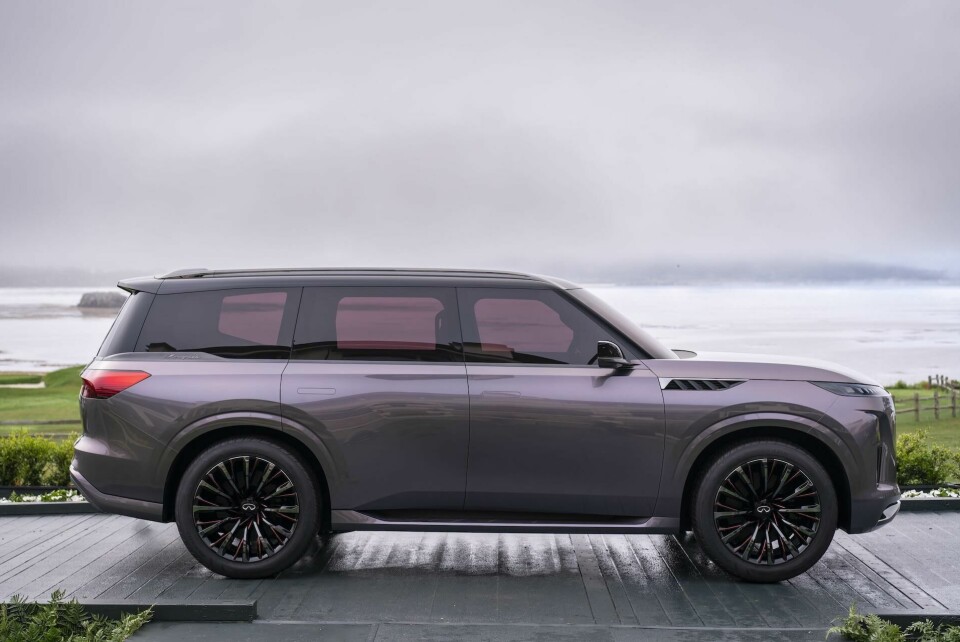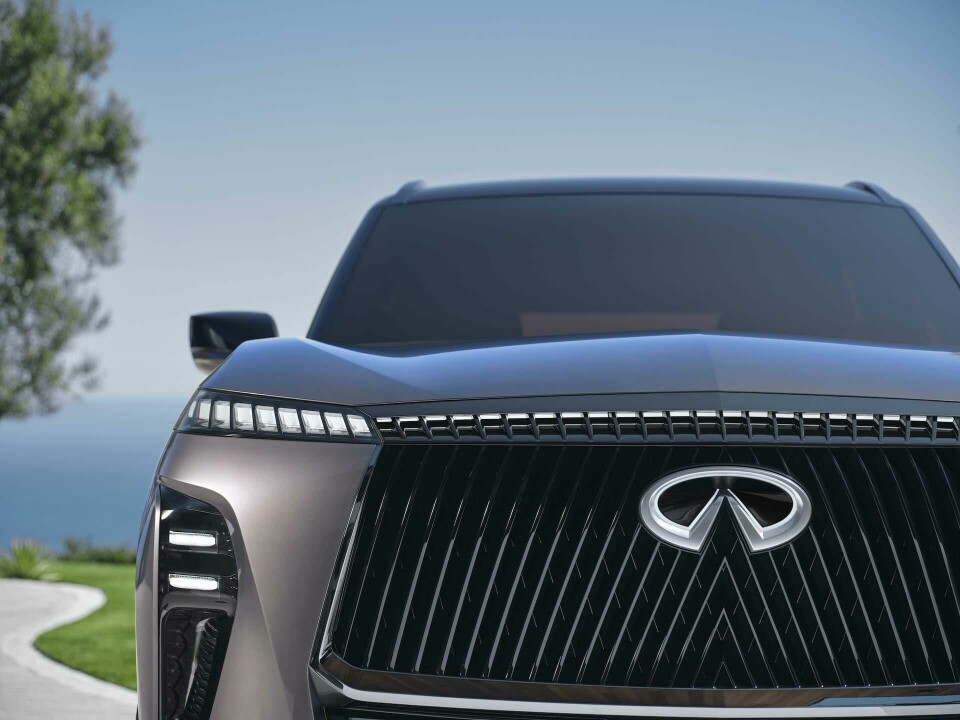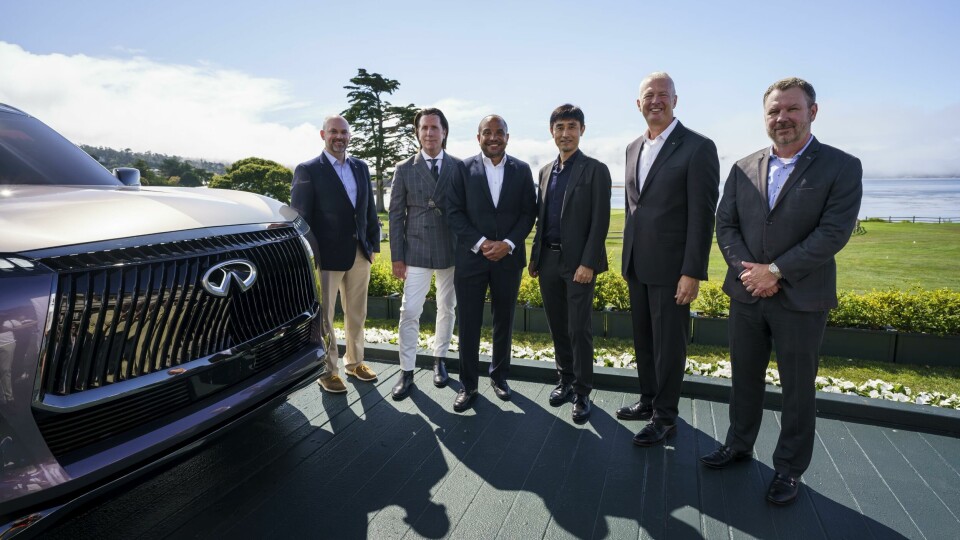
Alfonso Albaisa and Taisuke Nakamura on Infiniti QX Monograph
Unveiled during the 2023 Monterey Car Week, the QX Monograph SUV points the way to Infiniti’s next-generation design language. Nissan global design boss Alfonso Albaisa and Infiniti head of design Taisuke Nakamura break down some of the key design cues with North American correspondent Laura Burstein, and talk aerodynamics, origami, and taking risks
Sitting tall above the flashy supercars on the concept lawn at this year’s Pebble Beach Concours d’Elegance was the Infiniti QX Monograph, a massive manifesto for the future of Infiniti form language.
“We picked this scale because it’s the most authentic of our proportions and to see if we can show the artistic shifts that are coming,” Nissan’s senior vice president for global design, Alfonso Albaisa, said as we stood beside the car with head of Infiniti design Taisuke Nakamura.
The QX Monograph introduces a new era for Infiniti, drawing inspiration from Japanese heritage and artistry to create a visually striking and harmonious form.
“This vehicle is very big, so the motion should be quite graceful,” Nakamura explains, “Giving a gesture of…”
“… silence,” Albaisa finishes, as coincidentally, someone revs the 6.6-litre, twin-turbocharged petrol engine of a 1,817-horsepower supercar next door. “Which may seem strange for a big SUV. There’s a Japanese word —ma — which means the mastery of the empty space, which also in music is the silence between the beats of the percussion. Even our cars that are not EVs live in this space of high tech and seamlessness.”

At a time when many brands are sleekifying their SUVs with faster silhouettes and lower rooflines, Albaisa and Nakamura say size isn’t always the enemy of aerodynamics.
“Taisuke is a master of proportion management,” Albaisa says. “You’d think a vehicle with this kind of volume at the front would be anti-aero, but it’s interesting how you can cheat a little bit if you direct the wind through the volume. This is some of Taisuke’s magic.”
“If you look at the front, the perception of the height of the face is higher but the leading edge of the form is just below,” Nakamura points out. “So that means the height perception is higher but it’s more aerodynamic.”

The QX Monograph also showcases a new logo, an evolution of a design that first appeared on the brand’s Prototype 9 and 10 concept cars, shown at Pebble Beach in 2017 and 2018, respectively.
“We’ve had a bit of a long history in our re-drafting of our logo,” Albaisa explains. “Prototype 9 was this open-wheel, single seat roadster. The car actually drives but when we got in we couldn’t see beyond mid-hood, so we needed something on the front to judge where the end of the car was. We did this three-dimensional version of the logo and it looked really good. Then Taisuke and Karim [Habib, former head of Infiniti design] jumped it over on the Prototype 10. We loved the original ellipse logo, but we felt this was more interesting.”
Nakamura says he found the shape by playing with pieces of paper, folding them in ways inspired by the Japanese craft of origami. “It creates this natural geometric focus point, something connected with our ‘vanishing point’ logo,” he says.

At the same time, the design team developed a new grille, with a pattern inspired by a bamboo forest. Nakamura, proud of his Kyoto roots, says he was inspired by a local craftsman who made objects with bamboo materials, and a visit to the Arashiyama bamboo forest, not far from his native city. “I was on a small walking path near the end of the forest, and the bamboo started to move with the wind,” Nakamura remembers. “But because they are like ten meters tall, the movement is very slow and gentle. And when I looked up at the sky, the bamboo was making this canopy.”
It’s the first time the logo is completely integral to the grille
Albaisa points out how the grille pattern locks into the Infiniti emblem. “For us it’s the first time the logo is completely integral to the grille,” he says.
The duo also highlight the “piano key” lighting signatures, echoed in both the front and rear, as well as the uniquely-shaped air intakes at the lower corners. “Normally you don’t play around with these manly corners,” Albaisa muses. “It’s like, ‘this is where the man lives.’ But I fell in love when I saw it in the studio and they were talking about whether they should do it. When you step away, it’s frivolous, but actually it creates an outstanding signature for the vehicle.”
Along with Toyota and Lexus, Nissan and Infiniti are among the few brands that haven’t committed to full electrification, challenging the design team to create a consistent language interpreted for different proportions and powertrains. While Infiniti hasn’t disclosed exactly what we’ll see from the challenger luxury brand in the coming years, Albaisa gives us a few clues.
“This car itself is very large and looks like cars we have in the portfolio,” Albaisa explains. “You will see various things. We will still have cars that are ICE; a grille like this connotes some kind of direction. And with EVs, it’s a conversation we’re going to continue. Around Tokyo [the Japan Mobility Show in October] and other times soon you’ll see some hints. The vehicles will all look different, but hopefully you’ll be amused at how some of these signatures can play in a digital world, an electrified world, and an ICE world.”

The elements that will stay consistent across future vehicles are simple body sides, clean silhouettes, and what Albaisa calls the “romanticism” of a tapering-wedge volume. Adds Nakamura, “We are always looking at a sense of speed in our sculpture.”
Albaisa sums up the QX Monograph — and a common thread through all Infiniti design — in another Japanese word, kabuku. “It means to embrace an outstanding character,” he says. “So instead of just making something beautiful, which is the job of a designer, we take a risk and find some things that are not played with by other people, and allow that risk to define your aesthetic.”

















